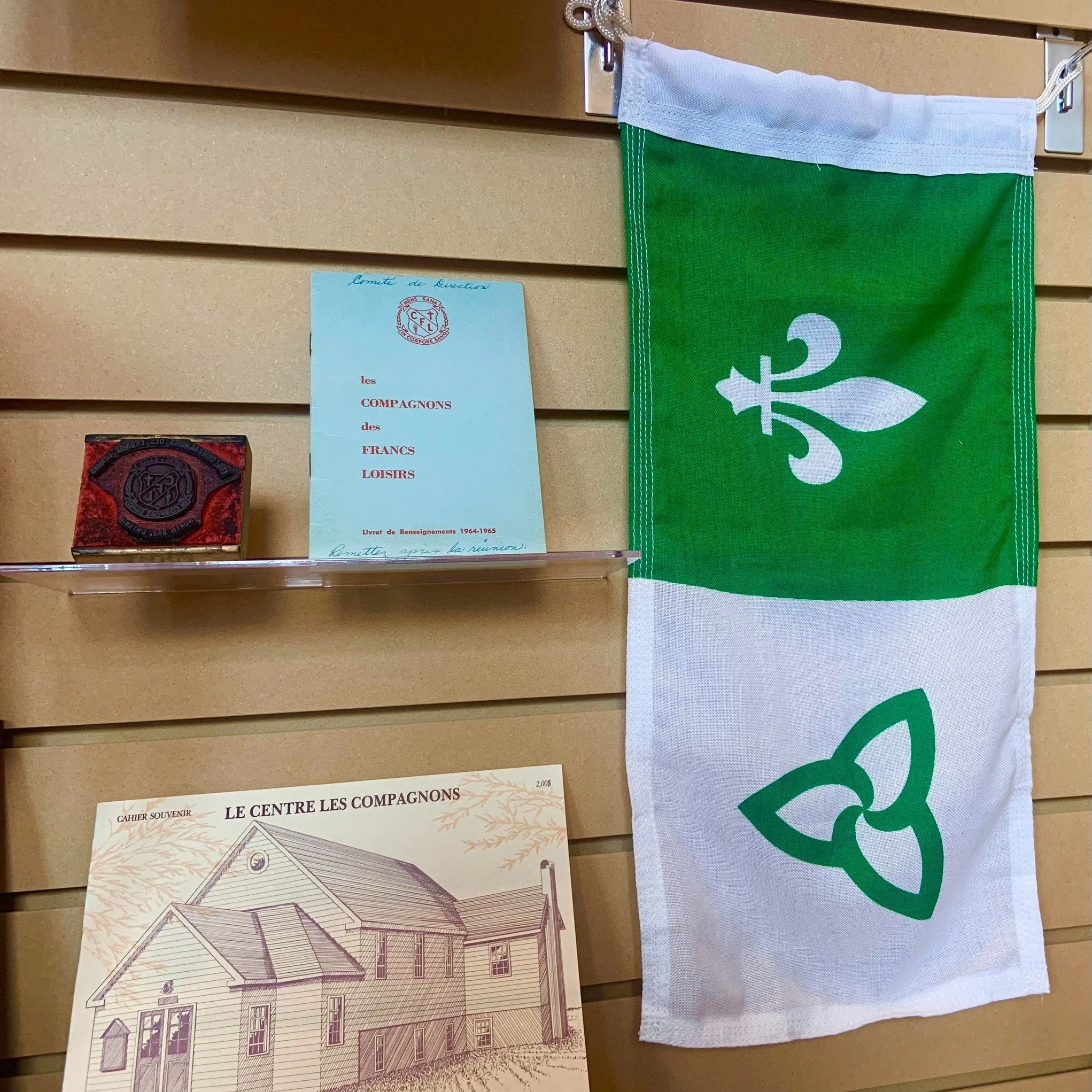Les Compagnons
UN QUATRIEME SIECLE DU PATRIMOINE FRANCO-ONTARIEN A Fourth Century of Franco-Ontarian Heritage
Les Franco-Ontariens ont lutté pour préserver leur langue, leur culture et leur identité. Refusés du droit d’ouvrir des écoles de langue française jusqu’en 1968, ils ont compté sur leur résilience et leur esprit communautaire pour maintenir leur patrimoine vivant. Ce besoin de représentation culturelle a conduit à la formation d’organisations clés, dont Les Compagnons, qui continue d’être un pilier de la vie franco-ontarienne à North Bay.
Franco-Ontarians have fought to preserve their language, culture, and identity. Denied the right to open French schools until 1968, they relied on their resilience and community spirit to keep their heritage alive. This need for cultural representation led to the formation of key organizations, including Les Compagnons, which continues to be a pillar of Franco-Ontarian life in North Bay.
Communautaires, ces initiatives renforcent l’identité locale et rassemblent les générations. Plus que de simples célébrations, elles témoignent de la détermination et de la fierté des Franco-Ontariens depuis l’arrivée de Champlain en 1616. Cette exposition met en lumière 100 ans d’histoire, illustrant les luttes, les triomphes et la richesse culturelle qui ont façonné la communauté telle qu’elle est aujourd’hui.
From the vibrant Carnaval des Compagnons to educational programs, artistic showcases, and community events, these initiatives strengthen local identity and bring generations together. More than just celebrations, they are a testament to the determination and pride of Franco-Ontarians since Champlain’s arrival in 1616. This exhibit highlights 100 years of history, showcasing the struggles, triumphs, and cultural richness that have shaped the community into what it is today.
Le Drapeau Franco-Ontarien, depuis 1975
The Franco-Ontarian Flag, created 1975
Roger Pitre au/at Carnaval, 1969
Roger Pitre a cree le premier costume de Bonhomme en 1964, qu’il a porte plus tard en tant que Bonhomme en 1969.
Roger Pitre created the first Bonhomme costume in 1964, which he later wore as Bonhomme in 1969.
Photo from/de: Les Compagnons des francs loisirs
Carnaval, 1966 et/and 1964
Photo from/de: Les Compagnons des francs loisirs
Le saviez-vouz…
Did You Know…
11.3 % des résidents de North Bay ont indiqué que le français était leur première langue, contre 3,3 % dans l’ensemble de l’Ontario dans le recensement de la population de 2021
11.3 % of North Bay’s residents reported French as their first language, compared to 3.3% in all of Ontario in the 2021 Census of Population.
Le drapeau franco-ontarien, conçu en 1975, a été le premier drapeau de ce type au Canada et représente la communauté francophone de l’Ontario.
The Franco-Ontarian flag, designed in 1975, was the first flag of its kind in Canada and represents the French-speaking community in Ontario.
1979 : Fondation de l’Alliance des caisses populaires de l’Ontario à North Bay
1979 : Foundation of the Ontario Caisse Alliance in North Bay.
Photo de l’équipe de l’école séparée St-Thomas ; gagnante du tournoi balle—molle fille
Photo of the St. Thomas Separate School Team; winner of the Girls’ Softball Tournament
Photo from/de: Les Compagnons des francs loisirs
Telegraph Regarding Carnaval des Compagnons Québec, Jan 31, 1964
To Mr. Jerome Tremblay Care of, or Apt. No. Compagnons des Francs Loisirs Street and No. North Bay, Ont.
Learned by way of newspapers and television—kidnapping of Québec’s Bonhomme Carnaval. Criminal pursuits will follow. The convicts will be sentenced to prison in the ice palace of Québec for the duration of Lent. Jean Lesage.
This telegraph was sent in jest to accuse the North Bay Compagnons of “stealing” Québec’s Bonhomme Carnaval since North Bay’s Carnaval was the largest Carnaval celebration outside of Quebec.
Je me souviens…
Remember When…
« Je me souviens que pour le premier carnaval, mon idée était de recréer l’atmosphère du Carnaval de Québec. Bonhomme Carnaval de Québec arriverait en train, avec de la vapeur qui s’échappait du train. Nous avions plusieurs connexions en place, avec des gens qui travaillaient là-bas. À l’entrée de la gare, nous avons fait monter Bonhomme à bord, et tous les enfants des écoles étaient là. C’est à ce moment-là que l’événement a vraiment pris vie. C’était une journée pleine de bonheur pour moi. »
“I remember for the first carnaval, my idea was to recreate the atmosphere of the Quebec Carnival. Bonhomme Carnaval de Québec would arrive by train, with steam escaping from the train. We had several connections in place, with people working there. At the entrance to the station, we brought Bonhomme on board, and all the school children were there. That’s when the event truly came to life. It was a day full of happiness for me.”
Extrait de l’interview avec Roger Pitre
Extract from the interview with Roger Pitre







